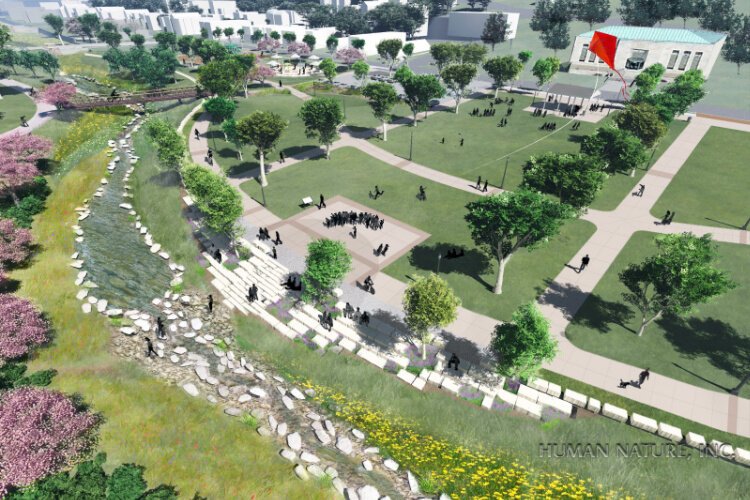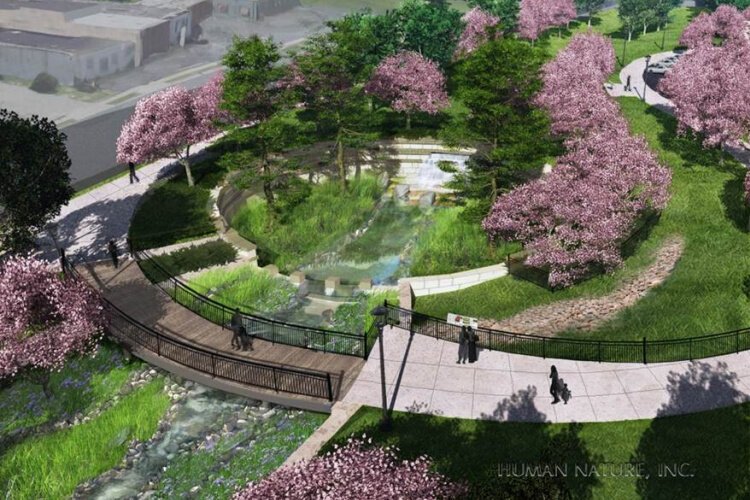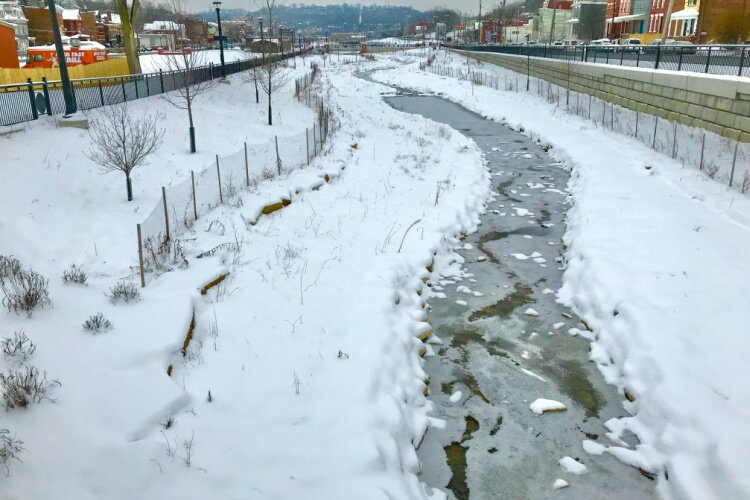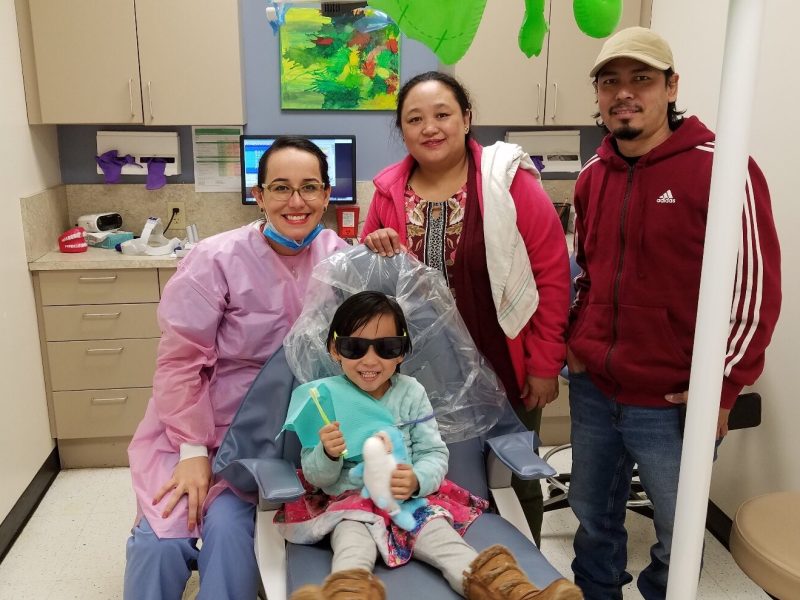A green solution to water pollution could also mark the beginning of rebirth for a neighborhood
The Greenway, a 1.5 mile-long watercourse and walking path situated between the two main drags in South Fairmount, is a feat of green engineering that goes a long way toward fixing one of the region’s biggest environmental challenges.
Cincinnati’s newest park features a lovely walk along a meandering stream filled with riffles, runs, and rocks. Native grasses and trees line the banks. But Lick Run Greenway is not so much a natural wonder; it’s a manmade one.
The park is a feat of green engineering that goes a long way toward fixing one of the region’s biggest environmental challenges. In the process, an urban greenspace was created through the heart of South Fairmount, one of the city’s most economically challenged neighborhoods, and, in the bargain, it became a source of hope for its renewal.
“It’s drawing new people to come and explore, which is one of things we were hoping would be a feature of it,” says Jim Casey, president of the South Fairmount Community Council. “Maybe from that we can generate more people wanting to repopulate the neighborhood.”
The Greenway is a 1.5 mile-long watercourse and walking path situated between the two main drags in South Fairmount, westbound Queen City Avenue and eastbound Westwood Avenue.
Lick Run Greenway was built to help fix an environmental problem that has persisted for decades. Most of the city’s old sewers handle both wastewater and rainwater. When it rains a lot, as it does in the Ohio Valley, these combined sewers cannot handle the volume of both, and they overflow, spilling contaminated water into the Mill Creek and other streams.
The U.S. Environmental Protection Agency wanted the problem fixed, and sued Cincinnati and Hamilton County. In 2002, the city, county, and EPA reached an agreement that resulted in a plan to separate stormwater sewers from wastewater sewers, a plan that is estimated to eventually cost about $3 billion.
South Fairmount, by virtue of its geography and its history, became a critical part of the solution. The core of the neighborhood lies in a valley and is surrounded to the north and south by steep hills. A hundred or so years ago, Lick Run was a natural waterway that drained the surrounding hillsides.
The 2,720-acre Lick Run watershed at one time included 31 miles of streams, the Metropolitan Sewer District says. Rain water naturally drained from this network into Lick Run and into Mill Creek. But as the area developed in the early 20th century, those streams were replaced by underground sewer systems.
Lick Run was swallowed by a sewer network that drained into a pipe that was 19 feet in diameter and poured into the Mill Creek. On its own, the Lick Run watershed accounts for an eye-popping 1.7 billion gallons of sewer overflow a year, the EPA says, 10% of Cincinnati’s total overflow.
Fixing it was essential to fixing the entire problem.
In 2012, after years of community workshops, neighborhoods council meetings, open houses, and surveys, MSD completed the Lick Run Master Plan.
One option on the table was to construct a massive underground tunnel and sewage plant to carry stormwater away. Instead, the agency opted to build a new Lick Run, to “daylight” the stream that had been buried for years, and use that as the means to drain stormwater.
Around it, they would plant grasses and trees to absorb water, build walking paths, a playground, a picnic shelter, and basketball courts.
The plan was greener, friendlier, and cheaper than the big tunnel by $200 million, MSD says.
“This project was a win for the taxpayers,” Casey says. “It cost less money, and derived additional benefits, other than just handling sewer overflows.”
It also represents a new start for a neighborhood that was in need of one. Nearly 47% of the neighborhood’s residents live in poverty, much higher than the 26% rate overall in Cincinnati. More than 6,000 people called it home in the ‘70s, but the population has shrunk to half of that today.
The foreclosure crisis of the Great Recession hit South Fairmount hard. Between 2006 and 2013, more than 200 homes were sold in foreclosure sales, nearly 18% of its housing stock, says Working in Neighborhoods, a community advocacy group.
To make way for the new greenspace, contractors demolished 92 buildings, old homes and businesses, most of which were in various stages of disrepair, having suffered from years and years of neglect.
“It’s like a garden that starts to get overrun with weeds,” Casey says. “Sometimes you have to remove a lot of mess before you can plant something new.”
In a neighborhood like South Fairmount, even a small positive change can generate momentum for more. With a $100 million investment in green infrastructure, community building, and quality of life, Lick Run Greenway could be the beginning of a turnaround.
“We have a key asset that we’re going to try and leverage,” Casey says.
The community council has started working on a new master plan. Queen City and Westwood avenues are both slated to be repaved, and Casey says the neighborhood is exploring ways to slow traffic on those thoroughfares. A new school, Heart Montessori, has moved into the annex of the old Roosevelt Elementary School on Waverly Avenue.
“It gives us some opportunities that we haven’t had in a long time,” Casey says.


















